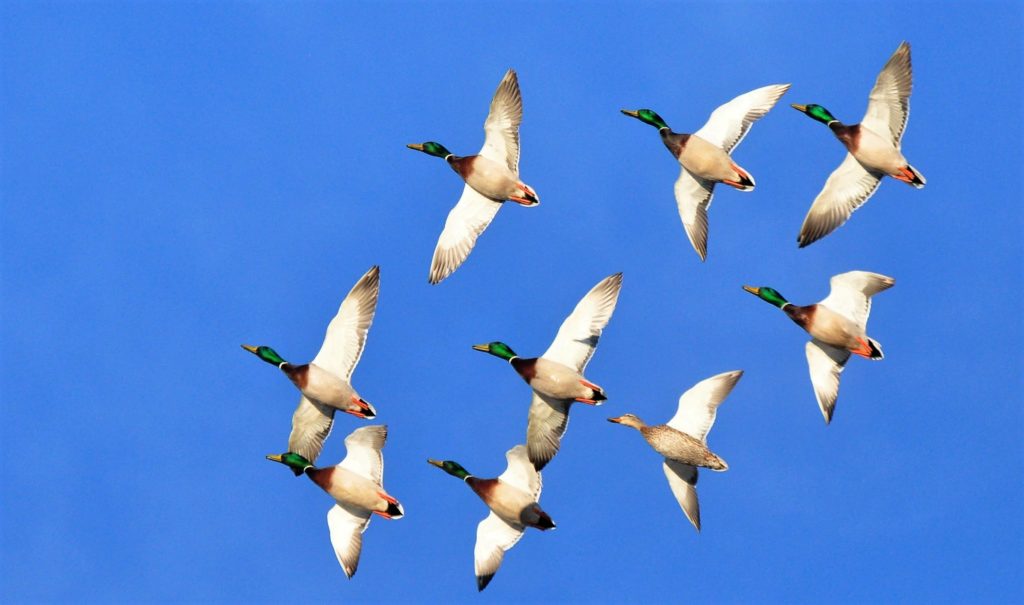Photography courtesy of Lowell Washburn, all rights reserved.

Duck hunters can expect to see strong waterfowl numbers during the 2019 fall migration and hunting seasons, says the U.S. Fish & Wildlife Service in a report released earlier this week. The assessment was based on data gathered during this year’s North American Breeding Duck and Habitat Survey. Conducted each year since 1955, the continent-wide annual waterfowl survey measures trends in duck breeding populations and monitors wetland [pond] indexes across the northern U.S. as well as for large portions of prairie and boreal Canada.
Although combined totals for the Top Ten surveyed duck species decreased slightly from 2018; individual populations for most ducks remains above the long term, 64-year average, says the Fish & Wildlife Service. Spring pond counts on Canada’s southern prairies were down during 2019 but showed increases across the grasslands of North Dakota, South Dakota and eastern Montana. Waterfowl biologists blame drier conditions across critical southern prairie, Canadian breeding grounds for the overall [5 percent] decrease in this year’s combined spring wetland counts.
Species Highlights: A surveyed breeding population of 9.4 million mallard ducks was reported by the Fish & Wildlife Service during 2019 – a slight increase from last year’s count and 19 percent above the long-term average. Blue-winged teal populations declined by 16 percent from 2018 but remain 6 percent above the average. The number of green-winged teal surveyed was 47 percent above the long-term average. The breeding population of scaup [bluebills] declined by 10 percent and is 28 percent below the average. The number of breeding pintails declined by 4 percent and is an alarming 42 percent below the long-term average. With the exception of scaup and pintails, all other surveyed duck species remain at or above the long-term, 64-year average.

So what does this year’s fall flight forecast mean to Iowa hunters? At this point in time, we’ll just have to wait and see. For those of us sitting smack in the middle of the Mississippi Flyway, there are always plenty of uncertainties. As is the case every year, the ultimate success of this fall’s duck season will largely depend on local wetland conditions, developing fall weather patterns and, of course, upon the migratory whims of the birds themselves.

 Tom Cope
Tom Cope Sue Wilkinson
Sue Wilkinson Susan Judkins Josten
Susan Judkins Josten Rudi Roeslein
Rudi Roeslein Elyssa McFarland
Elyssa McFarland Mark Langgin
Mark Langgin Adam Janke
Adam Janke Joe Henry
Joe Henry Kristin Ashenbrenner
Kristin Ashenbrenner Joe Wilkinson
Joe Wilkinson Dr. Tammy Mildenstein
Dr. Tammy Mildenstein Sean McMahon
Sean McMahon